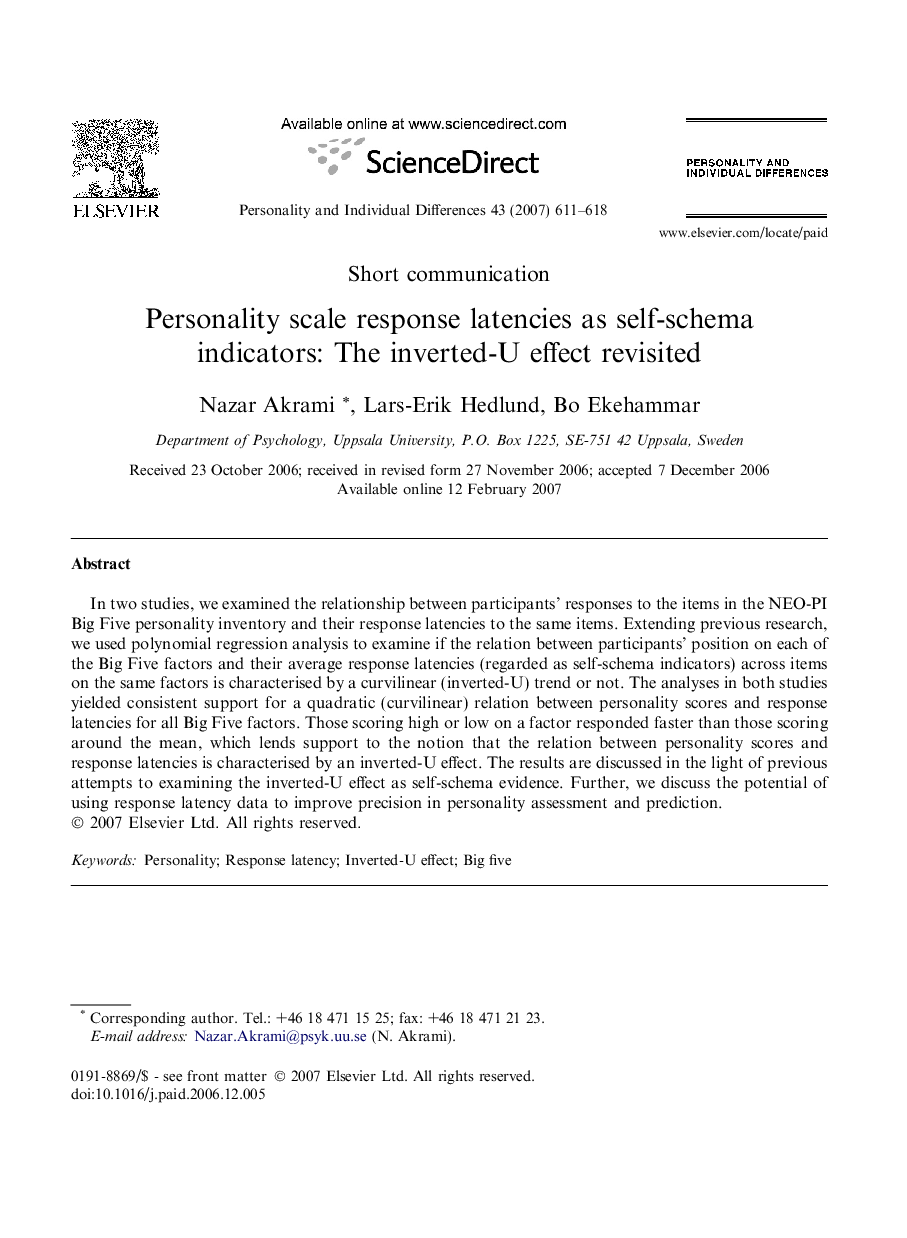| Article ID | Journal | Published Year | Pages | File Type |
|---|---|---|---|---|
| 892623 | Personality and Individual Differences | 2007 | 8 Pages |
In two studies, we examined the relationship between participants’ responses to the items in the NEO-PI Big Five personality inventory and their response latencies to the same items. Extending previous research, we used polynomial regression analysis to examine if the relation between participants’ position on each of the Big Five factors and their average response latencies (regarded as self-schema indicators) across items on the same factors is characterised by a curvilinear (inverted-U) trend or not. The analyses in both studies yielded consistent support for a quadratic (curvilinear) relation between personality scores and response latencies for all Big Five factors. Those scoring high or low on a factor responded faster than those scoring around the mean, which lends support to the notion that the relation between personality scores and response latencies is characterised by an inverted-U effect. The results are discussed in the light of previous attempts to examining the inverted-U effect as self-schema evidence. Further, we discuss the potential of using response latency data to improve precision in personality assessment and prediction.
